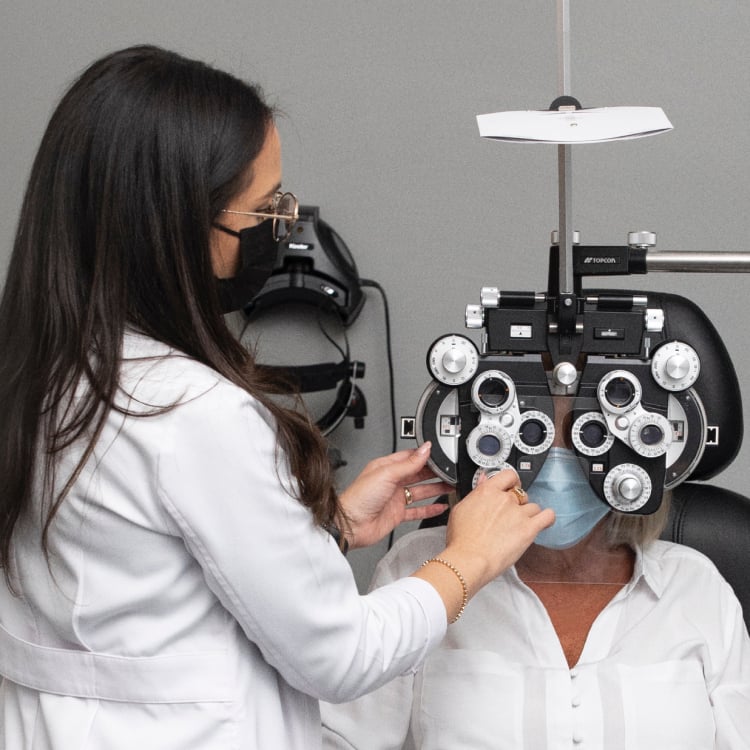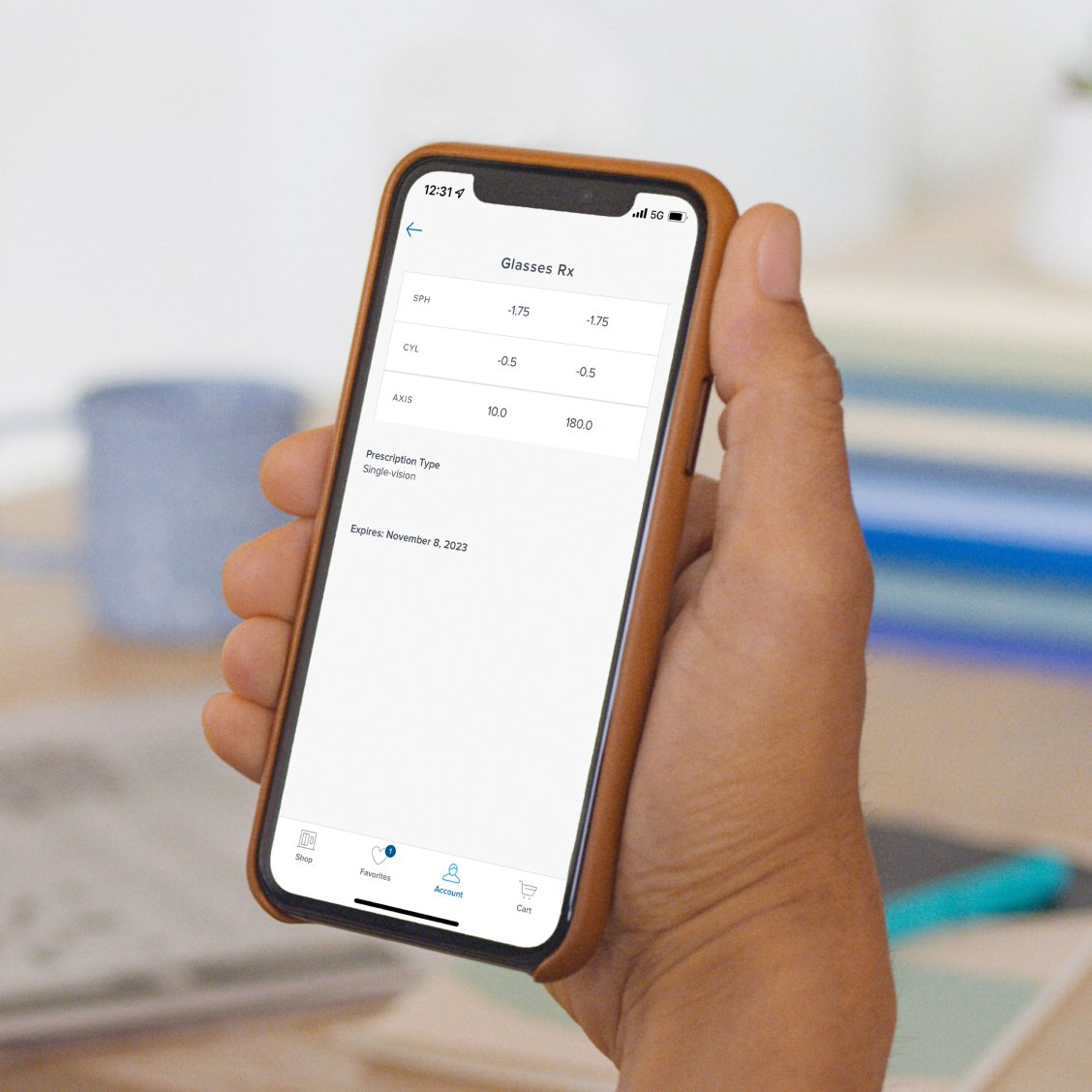Eye exams keep your eyes healthy and your vision sharp. But for many people, money can be an unfortunate roadblock to regular eye care.
According to the CDC, most adults who don’t schedule regular eye care appointments are either unaware of their importance or concerned about costs. And that’s fair! Eye exams can be expensive, especially if you don’t have financial support from vision insurance.
How expensive are we talking? And what’s the best way to ensure you’re paying a fair price for your eye exam? We’ve looked into the numbers so you can know what to expect on your bill.
What’s the Average Cost of an Eye Exam Without Insurance?
The average cost of an eye exam without insurance hovers around $100. But this number can change, depending on who you ask.
VSP, one of the most prominent vision insurance providers, lists the national average cost of an eye exam without insurance at around $194.
FAIR Health, meanwhile, has a couple different estimates for different components of a check-up. An examination of your eyes for health issues clocks in at around $135, and refractive tests that determine your prescription are estimated at around $54. That means the total average price for a comprehensive eye exam would be about $189.
These averages read a bit high to us—they’re prices for an independent optometrist, but many people choose to go to optical chains or retail stores, where the price of an exam is more affordable.
We’d say that in general, eye exams range in cost from around $50 to $250, and the popularity of retail stores and optical chains gives us the approximate average cost of $100.
What Determines the Cost of an Eye Exam Without Insurance?
How much an eye exam costs without aid from insurance will vary based on a number of factors. What kind of provider you visit, what kind of eyewear you’d like, and even the place where you live can all impact the price of your visit.
Type of Eye Care Provider
There are three main types of eye care providers that people consider when scheduling an eye exam.
Retail stores: Your CostCos, Targets, Sam’s Clubs, Walmarts, and more. These stores don’t specialize in eye care, but often have optical departments connected to them that offer eye exams.
Due to their arrangements with big names in retail, these departments tend to represent the most affordable option for an eye exam. Sam’s Club leads the pack with exams that cost around $45–$50, whereas you can expect to pay about $70 or more at the bulk of the other retail contenders.
Optical chains: Unlike retail stores, optical chains do specialize in eyes—their sole purpose is to administer eye care and sell eyewear. As the “chain” in the name implies, they have several locations throughout the country.
Not every optical chain operates the same way. An optometrist at an optical chain location might work entirely independently from the retail arm—essentially stationed next-door to it—or they might have a close business partnership with the eyewear shop.
Warby Parker is an exceptional case: we handle almost every aspect of the eye care experience, from conducting your exam (or connecting you to a qualified eye doctor) to the designing, manufacturing, and selling of our signature glasses frames. Rather than relying on middlemen or a slew of other glasses companies, we’re with patients for every step of the process, and we have more than 200 brick-and-mortar stores across the country (and that number’s growing).
Eye exams at optical chains tend to cost around the same as eye exams at retail stores. Some may also offer bundled deals on exams that include a purchase of glasses frames and lenses.
These deals will definitely decrease the cost of your exam, but given that the price of frames can exceed hundreds of dollars, you’ll want to consider your total bill before committing. For our part, Warby Parker’s commitment to affordable eyewear means that our frames start at $95 each, including prescription lenses.
Independent eye doctors: Clinics run by an independent optometrist or ophthalmologist (or a group of them) charge around $200 for an eye exam with a new patient.
If you become a regular patient, however, the cost of your eye exam will likely go down to somewhere in the $100-$150 range.
The reasons for these numbers can vary, and often depend on factors such as access to certain technologies or machines, the doctor’s specialties, the size of the office, and how insurance functions.
Type of Eye Exam
The above averages apply to a standard, comprehensive eye exam. That means the optometrist will assess the health of your eyes, test your vision, and see how your eyes refract light in order to prescribe you the right kind of corrective lenses.
Some clinics will charge an additional fee for dilating your pupils, if needed, or for retinal imaging that makes dilation unnecessary. Retinal imaging fees will generally run you between $35–$40.
Also, if you want to wear contact lenses in addition to or instead of glasses, then the price of your eye exam will most likely go up. There is usually an additional charge (we’re talking $100–$250 or thereabouts) for a contact lens exam and fitting.
If your eyes require even more specialized care—let’s say the optometrist finds evidence of a condition like glaucoma, for example—then you might receive recommendations for further testing, options for treatment, or a referral to an ophthalmologist, the costs of which could very well exceed the averages quoted here.
Location
Yep, where you live has an effect on the cost of your eye exam! Exams are much more expensive in coastal and/or metropolitan hubs. Typically, the bigger your city, the bigger your bill.
If you’re seeking a wallet-friendly option in your area for an exam, check for Warby Parker locations near you.
How Much Does an Eye Exam Cost With Insurance?
If you have vision insurance, then your eye exam will cost you much less out-of-pocket. It’s common to have a copay (think $10–$40 on average) for a comprehensive eye exam—and that’s if your insurance doesn’t cover it entirely.
But, having vision insurance also means paying monthly premiums, and those can add up to around $150–$200 a year, depending on your plan. Many plans will help you pay for prescription eyewear, and that bonus makes insurance worth it for people who plan on buying new glasses and/or contacts each year.
Most healthcare plans don’t have a built-in vision component, and won’t cover your routine eye exams if you’re an adult. (If you’re still technically a teen, you may be in luck: the Affordable Care Act mandated that all federally approved health insurance plans include pediatric vision coverage for people under 19.)
If you want vision insurance, you’ll probably have to enroll in a standalone plan that’s separate from your medical health plan.
Cost Shouldn’t Stand in the Way of Your Eye Care
Looking after your eyes and your eyesight is hugely important. No one should have to forgo eye care because of a lack of funds.
Thankfully, there are resources available for those who don’t have the finances for an out-of-pocket eye exam: The National Eye Institute has a list of programs that can reduce or eliminate the cost of both exams and prescription eyewear. Warby Parker’s exams are also priced below the approximate national average, starting at $85.
Your eyes deserve top-notch treatment that also respects your budget. Now that you know the average cost of an eye exam, we hope you feel empowered to choose the right optometrist for you—and if you need any guidance, we happen to know a couple.






